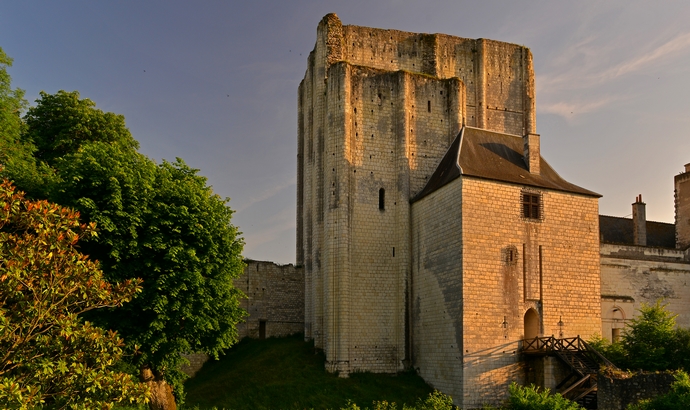New display at the Royal City
The Royal City of Loches celebrates the milestone moments and key figures (from the Count of Anjou, Foulques III Nerra, to Queen Anne, Duchess of Brittany) who lived here with a brand new experience that takes visitors back in time through 500 years of French history. With a tactile model, projections, videos and sounds to bring the royal court to life, the new display whisks visitors back to the Royal City’s heyday.
Visit or revisit the landmark’s history and its legendary characters at its new permanent exhibition covering 15 spaces (700m2) with two ambassadors as your guides: Amaury & Emeline!
The Keep
An 11th century masterpiece of military architecture.
The Loches Keep was built by Foulques Nerra in around 1000 AD. It is among the best-preserved in Europe and its 36m height makes it one of the most impressive keeps of the Romanesque era. This main tower was both a defensive and residential structure. It was besieged more than once during territorial battles between the Capetians and Plantagenets (12th and 13th centuries). It has been a count’s castle, a royal fortress, a state prison (15th-18th century) for high-ranking political prisoners and a departmental prison (19th and 20th centuries).


The royal lodge
An iconic landmark in the history of France.
Its terraced façade overlooks the town and the Indre Valley. The royal lodge is a medieval architectural gem (Gothic and Flamboyant Gothic styles) and was the Valois dynasty’s favourite residence. This is where Joan of Arc met the future King Charles VII. Agnès Sorel, the King’s favourite, lived here and the Queen of France, Anne of Brittany also stayed here.
The medieval-inspired garden Gonzague Saint-Bris Area
A peaceful oasis in the midst of a military fortress.
The 700m2 medieval garden flourishes at the foot of the keep, creating a striking contrast with the stone prison. The pergola, grass beds and willow hedges create a relaxing and whimsical haven. Indre-et-Loire Council was inspired by medieval illuminations to create these grounds in 1998.